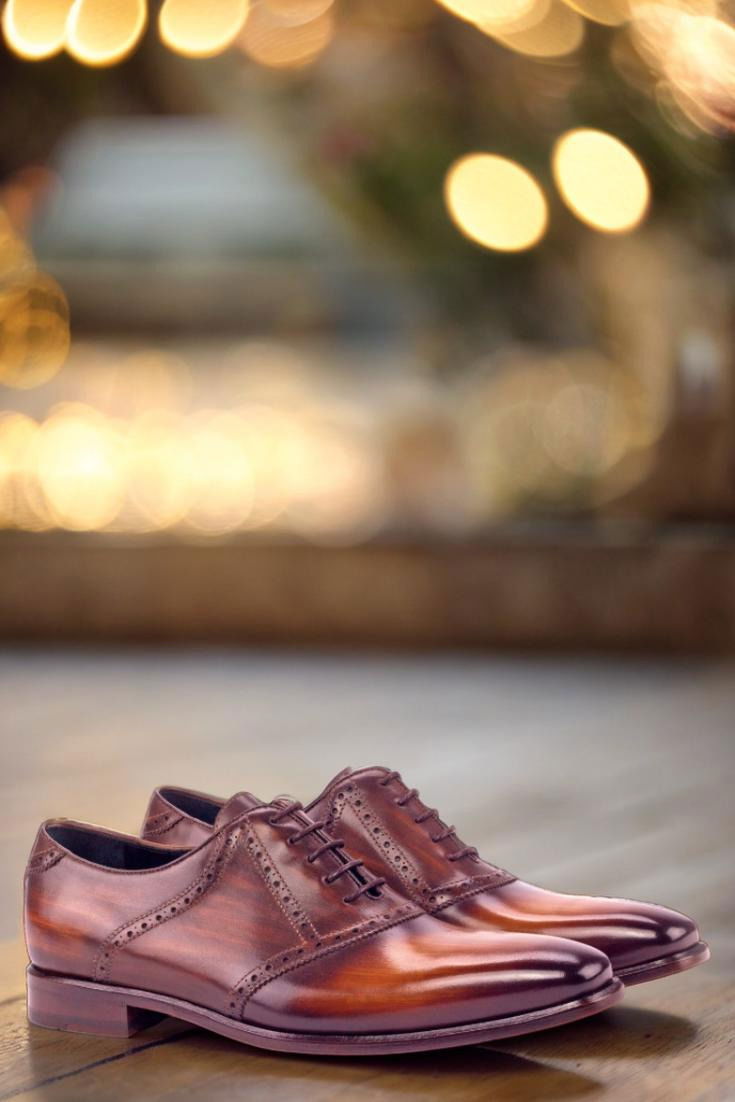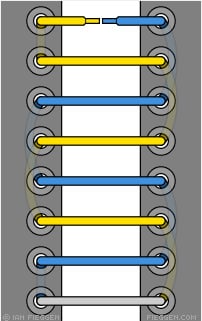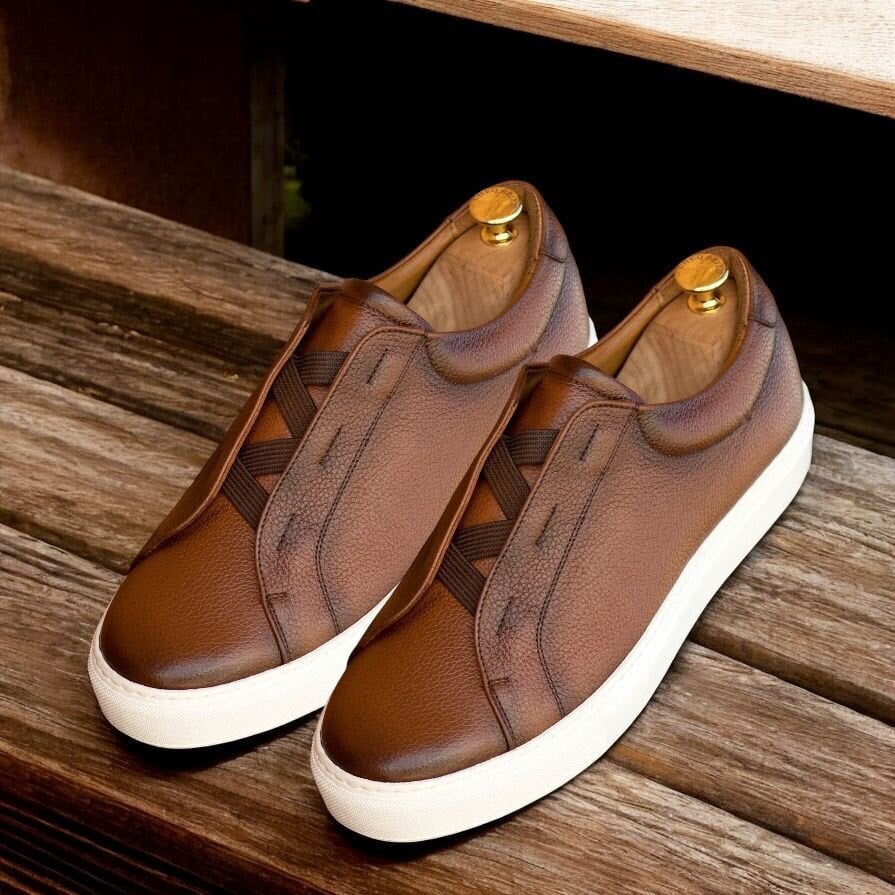
Ever wondered why wholecut oxfords often come with a higher price tag compared to other styles in the oxford family? At first glance, it might seem odd—after all, they’re made from a single piece of leather, so shouldn’t that mean less work? Surprisingly, it’s the opposite! Crafting wholecut oxfords is a more intricate process, and here’s why. Keep reading to uncover the craftsmanship behind these timeless shoes.

The first step in creating a quality shoe begins with the art of cutting the leather, a process known as ‘clicking.’ This is where upper leather quality is defined and where true craftsmanship shines. It’s not just about cutting leather—it’s about precision, skill, and experience. Higher-priced shoes (ideally) reflect this expertise, as you’re paying for a sharp eye, steady hand, and meticulous attention to detail. Master clickers expertly work around flaws while maximizing the hide, striking the perfect balance between efficiency and perfection. It’s an art form, plain and simple, and it’s what sets the best shoe brands apart from the rest.
Crafting a wholecut shoe is no simple task—it’s an art. It starts with a single, large piece of premium leather, but cutting it isn’t as easy as tracing a pattern and grabbing the scissors. First, you have to carefully inspect the hide, marking flaws and imperfections. Then comes the challenge of cutting the wholecut piece from the best sections of the leather, where the material is flawless. For larger shoe sizes, this process gets even trickier. And because only the highest-quality parts of the leather make the cut, it drives up the cost. Precision, patience, and skill—every wholecut shoe is a testament to the craftsmanship behind it.
The lower-quality sections of a hide often get reserved for less visible parts of a shoe, like heel counters, piping, or the underside during lasting. But here’s where the magic happens: skilled cutters can take these less desirable areas and craft full brogues, saving on costs in the process. That’s why shoemaking is truly an art form—and why wholecut oxfords come with a higher price tag. With a wholecut oxford, there’s no room to hide flaws; the leather must be flawless. In contrast, brogued shoes can cleverly conceal imperfections with smart cutting. So when you’re paying a premium for wholecuts, you’re paying for that perfection—and for shoes made with lower-grade leather, you should expect to pay less. It’s all about the balance between craftsmanship and material.
The second reason wholecut oxfords come with a higher price tag is their complexity to craft. Unlike a 5-piece oxford, these shoes lack the tension needed during the lasting process, making them much harder to handle. Here’s the tricky part: when you pull one end of the leather, the other side moves along with it, creating a real challenge for the shoemaker. If you’re a physics whiz or have ever tried lasting a shoe by hand, you’ll appreciate just how intricate this process truly is!.
It might seem like a small detail, but there’s more to it than meets the eye. The difference in tension between a single piece and one with seams is a game-changer. Seams let you pull one side while the other stays steady, offering flexibility and control. With a single piece, there’s no such give—it’s rigid, leaving no room for adjustment. This lack of flexibility makes it much harder to last the upper properly, often leaving unwanted air pockets behind.
Lasting a wholecut oxford is no easy feat—it’s a delicate process that can make or break the shoe. Get it wrong, and you’re left with excess space in the vamp, leading to unsightly creasing. The secret? Patience and precision. When using a lasting machine, it’s all about working little by little: pull one side, then the other, and repeat until the upper is evenly and firmly shaped around the last. Rushing with one big pull will create gaps, and that’s a recipe for disaster. To get it just right, the shoe needs to stay on the last longer, ensuring it molds perfectly to its shape. These extra steps take time, and time, as they say, is money. That’s why crafting a wholecut oxford is both an art and a labor of love—reflected in the final price of the shoe.
Next time you’re eyeing a whole-cut Oxford and wondering why it costs more, remember this post! Here’s the deal: whole-cuts take more skill and effort to craft. If a brand charges the same price as their other shoes, one of two things is happening—they’re either overpricing the rest of their lineup or underpricing the whole-cuts and eating the extra cost for you. Either way, one thing’s certain: these shoes don’t come cheap to make!




When it comes to finding the perfect shoe fit, there’s no one-size-fits-all answer. While there are objective factors to consider, the ideal fit is ultimately
Ever wondered why wholecut oxfords often come with a higher price tag compared to other styles in the oxford family? At first glance, it might

Bet you didn’t know there’s more than one way to lace up a men’s dress shoe—time to step up your style game! Dress shoes are

We’re thrilled to introduce the Cambridge Ave. Laceless Trainer, a sleek and innovative addition to our footwear collection that perfectly balances modern design with effortless